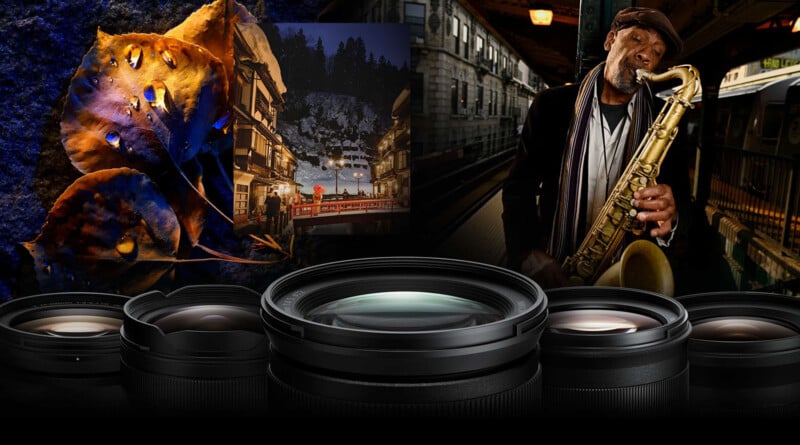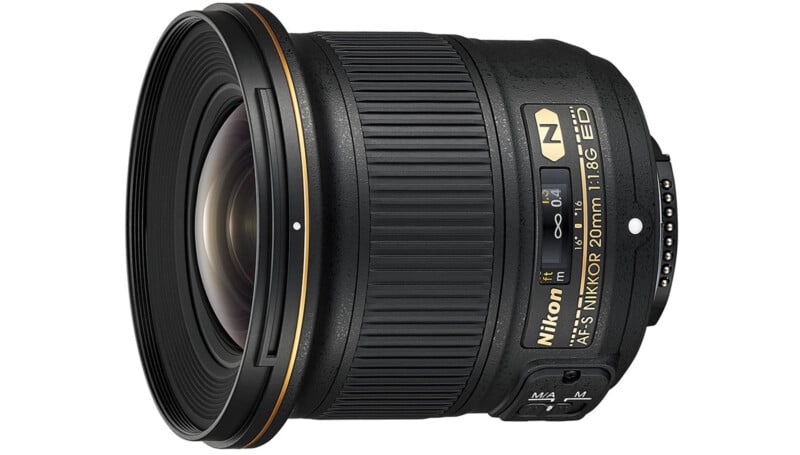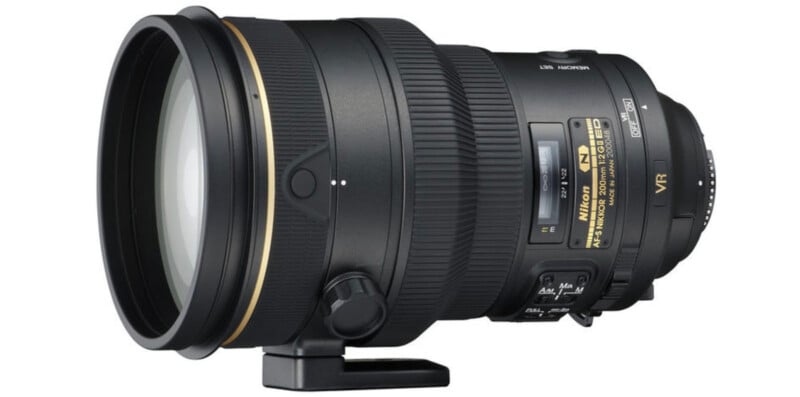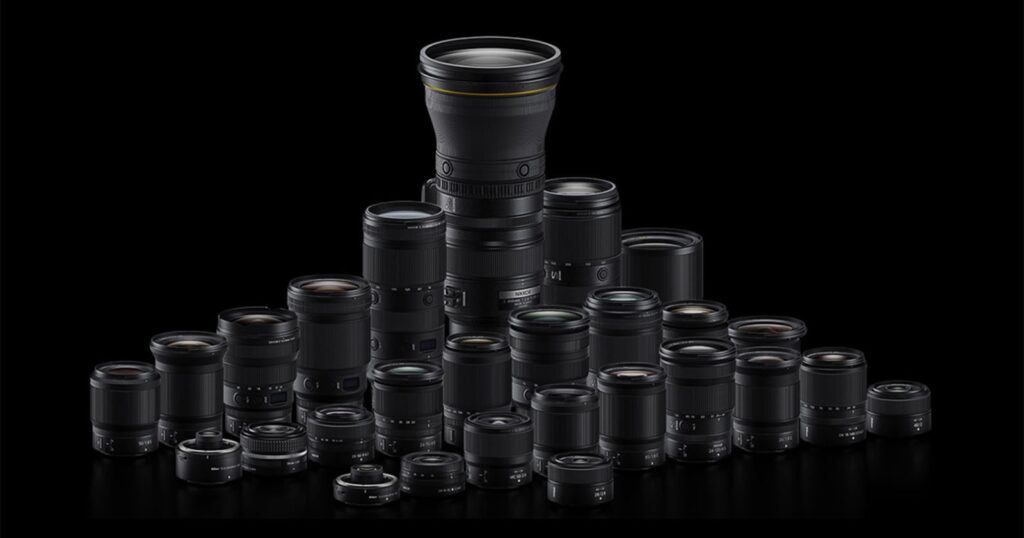![]()
During a discussion with PetaPixel at the NAB Show held in Las Vegas earlier this month, Nikon announced plans to release 50 Nikkor Z lenses by next spring. This raises an important question: what are the current gaps in Nikon’s Z system? What do photographers and videographers require next?
Ikegami, Senior Executive Vice President and General Manager of the Imaging Business Unit at Nikon, stated, “The key developments in our mirrorless camera system revolve around three main events: the release of the Z9 in December 2021, the launches of the unique Zfc and Zf models, and the expansion of our lens range.”
Ikegami pointed out that Nikon currently offers 46 lenses, which is an impressive feat considering that the original Z6 and Z7 models debuted in 2018 with only three lenses. Since then, Nikon has introduced nearly seven new lenses each year, a pace he deems “remarkable.”
“Our goal is to further broaden our lens offerings that take full advantage of the mount and cater to the varied needs and shooting styles of our customers. Looking ahead, we aim to exceed 50 lenses by the close of this fiscal year, which ends March 31, 2026,” stated Takashi Aihara, Department Manager, UX Planning, Marketing Sector, Imaging Business Unit at Nikon. While there’s a challenge ahead, it’s an achievable target based on the current trajectory.

Reviewing Nikon’s Nikkor Z lens selection, there aren’t many noticeable gaps, but there are areas that Nikon could potentially improve upon.
Wider and Faster Prime Lenses
The broadest Nikkor Z prime lens available is the Nikkor Z 20mm f/1.8 S, which, while good, is still not as wide as many photographers, particularly those involved in astrophotography, would like.
There’s also a notable demand for faster wide-angle prime lenses in Nikon’s offerings. Recently, Nikon launched the Nikkor Z 35mm f/1.2 S and Nikkor Z 35mm f/1.4 lenses, which are impressive in terms of performance and value. However, the current Nikon Z lineup lacks any wide-angle lenses with f/1.4 or faster apertures.

Nikon’s well-regarded F mount lenses could serve as a guide for future designs. The highly rated AF-S Nikkor 24mm f/1.4G ED and AF-S Nikkor 28mm f/1.4E ED primes are great examples. Nikon could certainly push boundaries further by introducing a 20mm f/1.4 or even a 16mm f/1.8 for its Z camera lineup. Such developments are entirely viable. Moreover, Sigma already offers a fantastic Art 14mm f/1.4 DG DN lens, which, unfortunately, isn’t available for the Z mount.
Specialty Lenses: Fisheye and Tilt-Shift (Perspective Control)
Nikon’s renowned F mount system, which they’ve utilized in various forms since 1959, has had ample time to grow. It’s no surprise that a variety of specialty lenses emerged for these SLR and DSLR cameras, including multiple fisheye and tilt-shift lenses, referred to as “Perspective Control” by Nikon.

The Nikkor Z series includes some captivating options, such as ultra-fast primes like the Nikkor Z 58mm f/0.95 S and various unique telephoto lenses like the Nikkor Z 400mm f/4.5 VR S, Nikkor Z 600mm f/6.3 VR S, Nikkor Z 800mm f/6.3 VR S, and the Nikkor Z 180-600mm f/5.6-6.3 VR. However, it currently lacks any distinctly “specialty” lenses.
This isn’t just a flaw within Nikon; other brands in the mirrorless market are also not focusing on fisheye or tilt-shift lenses, with few exceptions. Nikon previously excelled in this area during the DSLR era, and it could once again lead in the mirrorless market.
Nikon’s PC lenses, such as the 19mm and 45mm prime options, have generated significant interest among macro and architectural photographers. Although the FTZ adapter is available, there’s no alternative to innovative native lenses designed specifically for the Nikkor Z mount, which features a wide diameter and short flange distance.

What About DX?
While previous sections have highlighted lenses aimed at professional photographers, what options are there for newcomers and those using Nikon’s APS-C Z series cameras? The Nikkor Z lineup includes only a limited selection of APS-C lenses, primarily kit lenses and all-in-one zooms, with the exception of the Nikkor Z DX 24mm f/1.7.
Nikon’s current DX Nikkor Z lenses are indeed competent, and it’s clear that the overall photography landscape has shifted, leading to a decrease in the popularity of APS-C cameras within the predominantly full-frame Nikon Z ecosystem. Nonetheless, one can’t help but reminisce about the days of high-end APS-C Nikon DSLRs like the D300 and D500, and their accompanying lenses, such as the Nikon AF-S DX 17-55mm f/2.8G ED-IF and AF-S DX Nikkor 35mm f/1.8G.

For those shooting with Nikon’s mirrorless DX models, high-quality optics often require using full-frame lenses, which diminishes the compact nature of APS-C cameras. Essentially, APS-C photographers now find themselves having to choose between lesser image quality or a bulkier setup. The ideal scenario would be to find a solution that delivers the best of both worlds.
An Entirely New Approach
To date, the options have largely drawn inspiration from existing F mount lenses that haven’t transitioned to the Nikkor Z format, either as straightforward replacements or as new lenses offering similar features. Numerous F-mount lenses are still waiting for their chance—like the remarkable Nikon 105mm f/1.4E ED or the long-retired AF-S Nikkor 200mm f/2G II ED, a classic lens that remains cherished in the photography community.

Moreover, as Nikon has proven with its Z lens series, the Nikkor Z mount allows for entirely new lens designs and concepts that don’t have any F mount counterparts. Restricting Nikon’s optical engineers wouldn’t be wise, so there’s potential for the company to achieve its goal of 50 lenses with truly unique offerings that are hard to envision—until they come to life. Lens technology has evolved dramatically in recent times, with manufacturers developing optics that were once unimaginable.
Given Nikon’s surprising purchase of RED last year and the recent introduction of the Nikkor Z 28-135mm f/4 PZ lens, it’s also possible that Nikon may focus on creating lenses tailored for hybrid or even video-first uses to expand the Nikkor Z lineup. A wide-angle PZ lens would be a sensible addition, along with video-friendly adaptations of some existing Nikkor Z options, echoing Sigma’s approach with its zoom lenses.
While it remains unclear what specific lenses Nikon will launch to meet its goal of 50 lenses by the upcoming March, it is certain that whatever comes out in the meantime, Nikon Z users have much to be excited about, along with even more to anticipate.
Image credits: Header photo by Nikon


